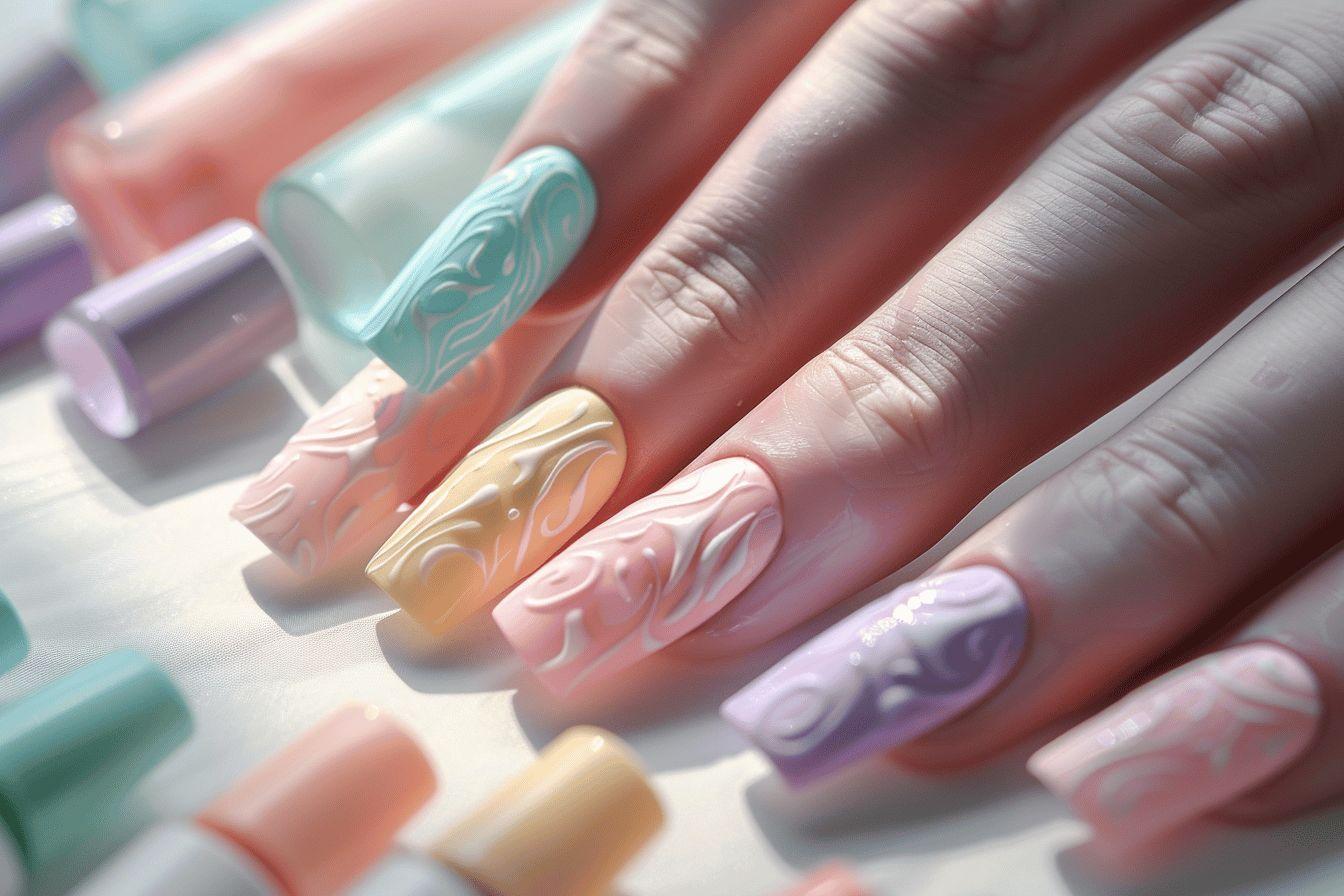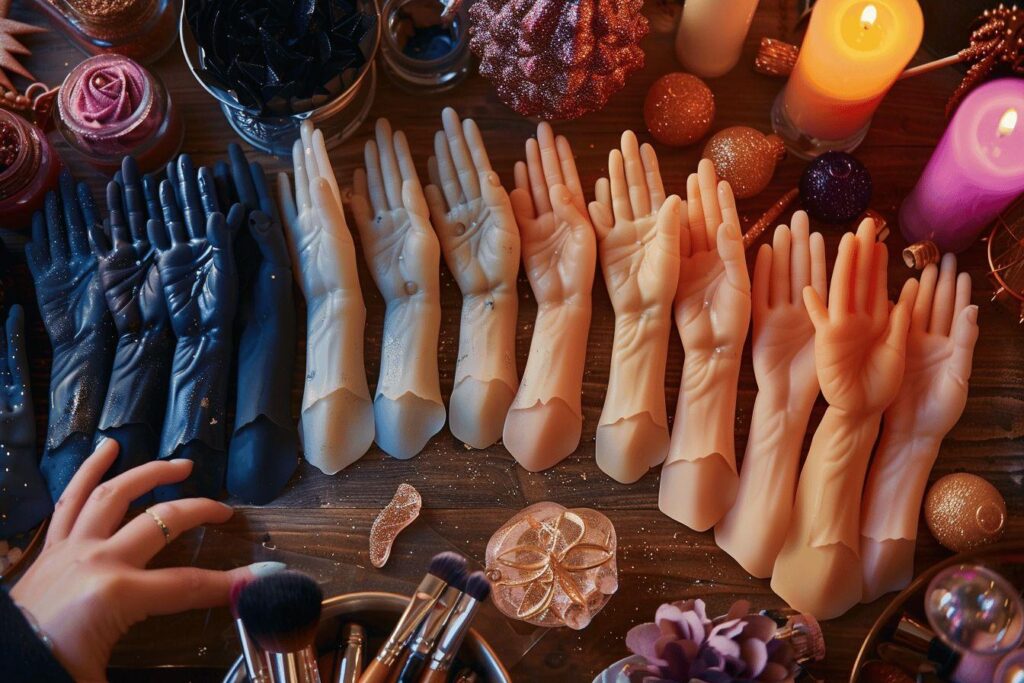Fake fingers are versatile accessories used in a variety of fields, from magic to disguise to special effects. These artificial replicas of human fingers offer a multitude of creative and practical possibilities. Let’s take a look at the different uses and characteristics of these intriguing objects.
Description and characteristics of fake fingers
Fake fingers are artificial reproductions of human fingers designed to resemble reality as closely as possible. They are usually made from materials such as plastic or silicone, offering a remarkably realistic texture and appearance. Here are some of the main features:
- Size: between 6 and 10.2 cm in length
- Colors: mainly beige and red for a realistic effect
- Texture: smooth, detailed appearance, imitating human skin
- Finish: some models include details such as fingerprints and hairs
- Flexibility: available in rigid or soft versions, depending on use
The manufacturing quality of fake fingers varies considerably according to their intended use. Top-of-the-range models, such as those used for cinema special effects or prosthetics, are made with extreme attention to detail. Conversely, versions intended for Halloween costumes often favor a more grotesque and frightening appearance.
| Fake finger type | Main material | Common use |
|---|---|---|
| Realistic prosthesis | Silicone | Aesthetic replacement |
| Magic accessory | Soft plastic | Illusion tricks |
| Halloween decoration | Rigid plastic | Horrific effects |
| Nail art stand | Plastic or silicone | Nail art trainer |
Various uses for digital replicas
Fake fingers are used in many different fields, each exploiting their unique characteristics for specific purposes. Let’s take a look at the most common uses for these fascinating accessories:
In the world of entertainment and magic, fake fingers are invaluable tools for illusionists. They can be used to perform spectacular tricks, such as the sudden appearance of a sixth finger. These cleverly concealed props give magicians the opportunity to surprise and amaze their audiences with striking visual effects.
For fans of Halloween costumes and parties, fake fingers are a particularly popular macabre decoration. Their realistic and sometimes horrific appearance makes them the accessories of choice for scaring children and creating a terrifying atmosphere. Strategically placed in a haunted house or integrated into a costume, they add a touch of authenticity to even the scariest stagings.
In the beauty industry, and more specifically in the field of nail art, fake fingers serve as training aids for professionals and apprentices alike. They enable practice in false nail application and polish application without the need for a live model. Although some models may have technical limitations, particularly under the nail, they remain valuable learning tools.

The fascinating history of digital prosthetics
The use of false fingers as prostheses has a particularly interesting history, especially in Japan. These accessories have played a crucial role in the social reintegration of former members of the yakuza, the Japanese mafia. The practice is linked to an ancestral tradition within these criminal organizations:
- Yubitsume, or ritual finger amputation, was a form of punishment and repentance within the yakuza.
- Offending members would voluntarily cut off a phalanx to atone for breaches of the code of honor.
- This painful and bloody process left visible marks, becoming a hallmark of the yakuza.
- Missing fingers made it extremely difficult for former members to reintegrate into society.
Faced with this challenge, specialized craftsmen like Shintaro Hayashi developed ultra-realistic silicone finger prostheses. These custom-made fake fingers enable former yakuza to conceal their past and reintegrate more easily into civilian life. The cost of these prostheses is substantial, around €2,300 for the initial mold, which must be renewed every three months to maintain a natural appearance.
Innovations and future prospects
The field of false fingers is undergoing constant technological advances, opening the way to exciting new applications. Advances in materials and manufacturing techniques enable the creation of ever more realistic and functional replicas.
In the medical sector, researchers are working on the development of digital prostheses equipped with tactile sensors. These innovations could enable amputees to regain some of their sensitivity, considerably improving their quality of life. The false fingers of the future could not only resemble real fingers, but also reproduce some of their sensory functions.
The film and special effects industry also continues to innovate in this field. Make-up artists and prosthetists are analyzing new techniques to create fake fingers capable of moving realistically on screen. These advances open up new possibilities for creating fantastic characters or simulating injuries without risk to actors.
Finally, in the field of biometric security, fake fingers pose new challenges. Designers of fingerprint identification systems must constantly improve their technologies to detect and reject fraud attempts using increasingly sophisticated fingerprint replicas. This technological race is driving innovation in the fields of biometric recognition and cybersecurity.

